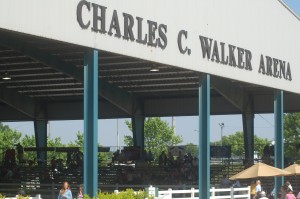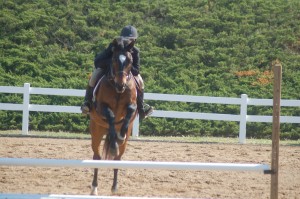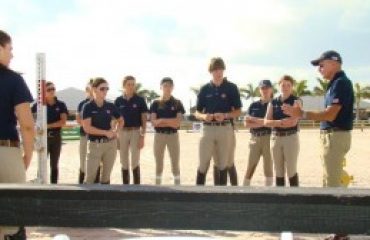The Interscholastic Equestrian Association National Finals were held April 23-25 in Conyers, Georgia. In keeping with our June focus on education and horses, we asked two IEA riders who competed at the Finals to write about their experiences.
Today we bring you the words of 15-year-old Emma Beriker, and tomorrow check this space for 15-year-old Lauren Corey’s account of her experience at Nationals. Both girls are 15 years old and live in Woodside, California.
IEA NATIONALS 2010 | by Emma Beriker
For equestrians, participating on a school sports team is not very common. But the Interscholastic Equestrian Association provides the opportunity for middle and high school students to take part in an equestrian team. Having an interscholastic team is great because it allows riders to compete not only as an individual, but for a team of their peers. As a sophomore at Woodside Priory School in Portola Valley, California, this is my second year on the equestrian team. In the two years that I have participated as part of the team, I have seen rapid growth not only on our own team, but also in our zone. It is increasingly more difficult to place in the competitions and to qualify for zones and nationals.
This past season recently topped off with the IEA National Finals held in Atlanta, Georgia. I had the privilege to qualify and compete with the other top 20 Varsity Intermediate riders across the US in both flat and jumping divisions. As my second year at Nationals, the opportunity to represent my school and ride at this event was amazing. This year it was held at the 1996 Olympics site of the Georgia International Horse Park.
The facility was impressive to say the least. The long tree lined drive led up to an outdoor field with football stadium lights and arena seating, not a typical sight on the California circuit. Arenas and barns sprinkled the sprawling green fields, making it a picturesque scene.
One of the most challenging aspects of IEA riding was the random drawing of unfamiliar horses. Without knowing how the horse rides, a two fence warm up is all that is allowed before riding straight into the show arena. Compared to horse shows in which you know your partner’s every strength and weakness, IEA has this added extreme. I’m sure that every rider in the IEA has experienced a round in which they did not except their horse to refuse, pick up the wrong lead, or ignore the leg.
It is a true test of equitation for a rider to adapt their riding skills from horse to horse while making it look like its easy, which, as we all know, is not the case.
Straight into the arena with no warm up, the flat phase kicked off the first of the four days of National competition. The pool of horses came from all across the country providing nice rides. Flat was run more like entertainment for spectators; the serious and tense competition in the flat classes were balanced out with uplifting background music. The next day of competition came with the excitement and the precision of the jumping phase. Allowing the classic use of long approaches to show off a nice pace, with a mix of handy equitation bending lines and turns that tested the riders, my division was fun to ride. With a collection of the top-pointing riders all over the US, the highest placing senior in each class received scholarship money. This was a unique characteristic of the competition, keeping one of the main focuses of the association inclusive of riding and education.
IEA volunteers and staff did a tactful job of keeping the entire competition running smoothly and on time (a rare case for horse shows). The competition lived up to the “southern hospitality” reputation and was very spectator friendly. Just having the opportunity to compete at nationals for the second time in a row was an incredible experience for me.






